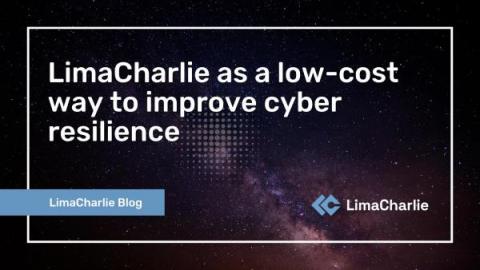Security | Threat Detection | Cyberattacks | DevSecOps | Compliance
Latest News
Insights from an external incident response team: Strategies to reduce the impact of cybersecurity attacks
"Why are you here if you cannot decrypt our data?" This is how people sometimes react to the arrival of the external incident response team. In this article, I will try to answer this question, but at the same time, I am going to describe the stages of incident response, list the main mistakes that play into the hands of hackers, and give basic advice on how to respond.
5 Steps to Improve Your Cyber Attack Response
Why Your SOC Needs Automated Incident Response
Automated incident response can help security teams identify and respond to cyber threats faster. When a breach happens, delays equal costs. Today, a cyber attack happens every 39 seconds, and the global average total cost of a data breach is the highest it’s been in 17 years. In this environment, a low response time is crucial to reducing cyber risk.
Computer Security Incident Response Teams: CSIRT Models, Skills & Best Practices
Stories from the SOC - The case for human response actions
As we move towards more automation, we should remember the risk of over-automating, or at least make a conscious decision to accept the risks. This is especially important in automating response actions, which left unchecked could wreak havoc with day-to-day business operations.
LimaCharlie as a low-cost way to improve cyber resilience
Organizations know that they need to become more cyber resilient, and are asking MSSPs and enterprise security teams to help. But in a time of economic uncertainty and shrinking budgets, the goal of cyber resilience is often at odds with what management is prepared to invest. The good news is that LimaCharlie can be used to help security professionals improve cyber resilience—with a level of control and at a cost efficiency unparalleled industrywide.
What Can Managed Detection and Response (MDR) Do for Businesses
Businesses should make cyber security a top priority. Learn what managed detection and response (MDR) can do for your business.
8 Steps Every Incident Response Plan Requires to Spot, Contain and Recover From an Attack
The popular saying “Keep Calm and Carry On” is a good mantra for any company that finds itself undergoing cyberattack, but what that pithy phrase does not mention is how one stays calm when a threat actor has locked down your system and is demanding a multimillion-dollar ransom?
How to Build a Solid Incident Response Team
In today's increasingly digitized world, nearly every aspect of our personal and corporate lives is connected to the internet, making cyber security an essential component of ensuring the safety and security of our organizations and all of our professional activities. One of the most important steps you can take to protect your organization's cybersecurity posture and respond to incidents quickly and effectively is creating a solid cybersecurity incident response team.










